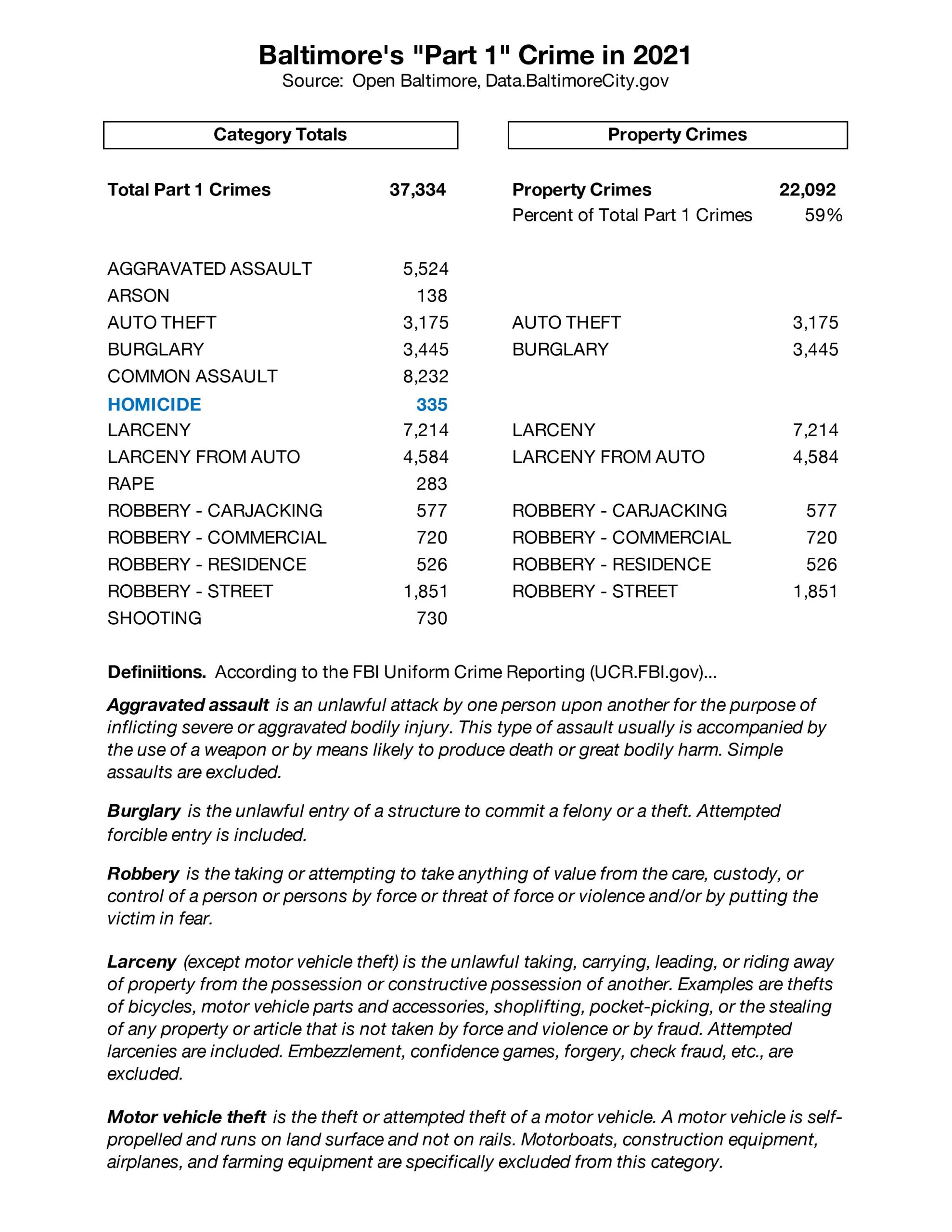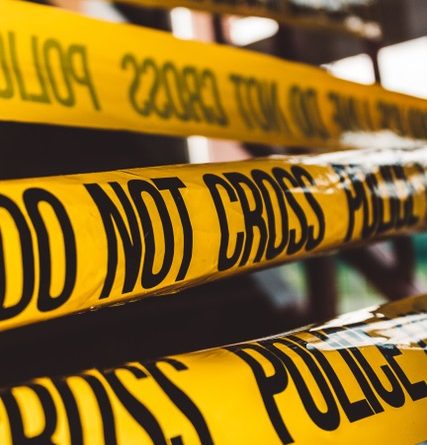Missing the Point: Crime City, USA
The nickname, “Charm City,” isn’t exactly how Baltimore is viewed by many across our nation. That’s too bad. While the title of this piece may be slightly over-stated, the fact is that Baltimore makes the top 5 in every list of the nation’s most dangerous cities, depending upon which definition of violent crime the authors may have used. I’d offer my congratulations on being so highly ranked, but then being an unsafe place to live and work isn’t a good thing.
Not that there aren’t far more charming people and impressive elements of life in Baltimore, but they tend to be overshadowed in the local media and in the boardrooms of companies considering locating in the city by the persistently bad news of murder and mayhem. Homicides make the front page of The Sun and invariably take up the first five or more minutes of the local 11 PM TV news. …That’s actually why I started, years ago now, watching Don Lemon on CNN as I wrap it up for the night. The national political and international bad news is just easier to take.
According to Open Baltimore crime statistics, there were 335 murders in Baltimore in 2021. As of this writing, 244 homicides have been reported so far this year. It’s a number that will be higher by the time you’re reading this. Those are the numbers you’re used to seeing. Unfortunately, despite their horrific implications for the victims and their families, they severely understate the extent of crime in the city.
The graphic below has, as you can see, two columns. The column on the left lists what the FBI calls “Part 1” crimes. As for the seriousness of crimes in this group, their names speak for themselves. The column on the right shows a subset of the Part 1 crimes that are associated with “Property.” These are what I call “economic crimes” in that they are the jobs of a criminal element that, for the most part, doesn’t perceive itself as having alternative legitimate career opportunities. Make no mistake about it. Committing crimes in this subset of Part 1 categories is “work” in every sense of the word. And therein lies the solution for eliminating this category of criminal activity, albeit not necessarily for the current generation of property crime criminals.
At the bottom of the insert are FBI definitions of selected Part 1 crimes that you may find helpful. FYI, for those of you who are not familiar with crime statistics for Baltimore that are published by the FBI, the FBI does not have a Part 1 category called “Shooting.” That’s a Baltimore thing. In the interest of standardizing crime data for comparison nationwide, the FBI’s Uniform Crime Reports consider “shootings” to be in the category called “Aggravated Assaults,” as in aggravated by the use of a gun. These are instances when people are shot, but not killed. If they had been killed, the crime would be classified as “Homicide.”
The total number of these reported crimes in 2021 is staggering – 37,334 for a city of fewer than 600,000 people. Is it any wonder that the population of Baltimore has been declining steadily since 1950? These crimes don’t make the headlines and breaking TV news, but you can be certain that they are nonetheless discouraging employers of all sizes from coming to Baltimore.
The other number to notice is that 59% of these Part 1 crimes are those which generate income for the perpetrator. They’re the “economic crimes” that would be discouraged by greatly improved public education and a thriving jobs market for all of Baltimore. Make sure the city’s children grow up in a world in which they will be part of the legitimate economy and criminal activity will be a less interesting option.
At the end of this piece, you’ll see a link – which, by the way, is one of the great advantages to reading an online newspaper – to a PDF titled “Part 1 Crimes in 277 Baltimore Neighborhoods.” Clicking on it will produce an alphabetical list of Baltimore’s neighborhoods on the left and then, reading across the top, a list of Part 1 crimes. The table shows the number of specific crimes occurring in each neighborhood. Open the PDF. Print it out if you like. Email it to your family and friends.
I could have put all these 2021 crimes on a map of the city, but there are so many of them, 37,334 to be precise, they’d obliterate the view of all the places that are important to you. Not incidentally, the effect is similar to how crime in Baltimore sucks the air out of the room, so to speak, denying well-deserved exposure to the good and often wonderful things the city’s residents do every day.
Look around the table that these neighborhoods and Part 1 crimes define. What crimes are happening where you live, in the neighborhoods around you, where you work, where you shop, where you go for a walk or run, where you go out for the evening with family and friends? Why do I feel like apologizing for being the bearer of bad news? I’m not trying to scare you. What I’m trying to do is motivate your city government through you. I want to encourage you to change your government’s leadership if it fails to understand the severity of the situation and demonstrate the competence and initiative to take long overdue corrective action.
The reality is, you’re not safe just because no one ever gets murdered on the block where you live. As awful as the city’s murders are, they are but a tiny fraction of the total volume of serious, often violent crimes happening, routinely, every day in your city. To focus, in the media, on the homicide rate is important, of course, but misses the point.
Regrettably, the solution to crime in Baltimore is not more and better policing. At best, policing is reactionary, after the fact, and a short-term deterrent. Nor is it about kind, well-intentioned small scale social programs which are unquestionably helpful, but not fundamental to economic recovery.
The solution to crime involves long-term, very substantial improvements to public education – relative to which Baltimore City is ranked at the bottom of the state’s counties – and citywide economic recovery, a/k/a “jobs.” Lots of the right kinds of jobs. In the city’s most troubled neighborhoods. Jobs that will eventually make the pursuit of criminal activity by too many city residents unnecessary.
Here’s the link I promised to give you:
Part 1 Crimes in 277 Baltimore Neighborhoods
Useful links.
Go to the FBI for information about Uniform Crime Reporting:
https://www.fbi.gov/services/cjis/ucr/
To Open Baltimore for information, including mapping, related to crime and other important Baltimore statistics: https://data.baltimorecity.gov

Les Cohen is a long-term Marylander, having grown up in Annapolis. Professionally, he writes and edits materials for business and political clients from his base of operations in Columbia, Maryland. He has a Ph.D. in Urban and Regional Economics. Leave a comment or feel free to send him an email to [email protected].

